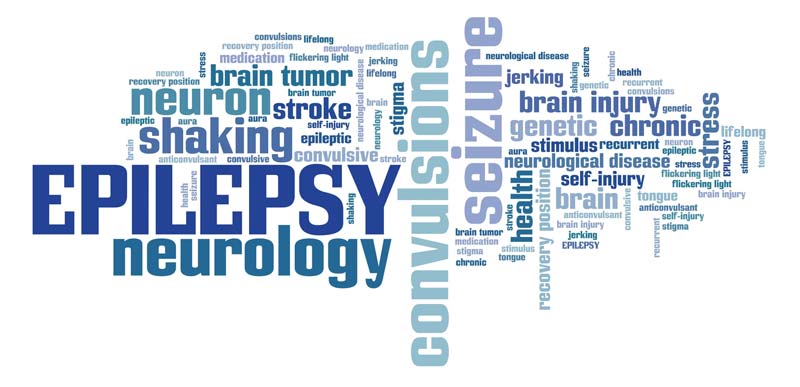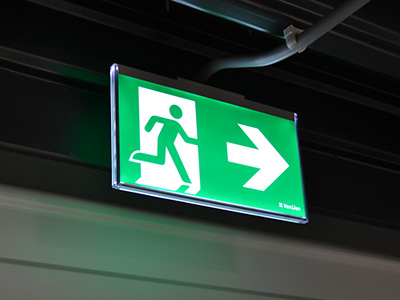Epilepsy in the workplace: a 10 step guide
What every employer needs to know
Epilepsy is a neurological condition affecting around 600,000 people in the UK – so it’s essential that every employer knows how to help those with the condition. Here we outline our advice in a 10 step guide.
The majority of people diagnosed with epilepsy are likely to be classified as disabled by the Equality Act. This means that employers must make reasonable adjustments for people with epilepsy, and to complete appropriate risk assessments.
Epileptic seizures
There are many different types of epilepsy, but people who have it have a tendency to have epileptic seizures. A seizure is a sudden burst of electrical activity in the brain, which causes a temporary disruption to the way the brain normally works. Seizures can range from the person remaining alert and aware of their surroundings, through to the person losing awareness and becoming stiff, falling to the floor and/or experiencing uncontrollable, jerky bodily movements.
Ten-step guide to epilepsy in the workplace
If your organisation has an employee with epilepsy, our 10 step guide highlights the actions you should take.
1. Understand the nature of the person’s condition including:
- medication requirements (particularly at work)
- how well their epilepsy is managed
- type, duration and frequency of seizures
- any associated musculoskeletal issues
- any medication side effects
- any warning signs that they are about to have a seizure.
2. Identify any triggers for their seizures, and work out how these can be eliminated or reduced to minimise the risk as much as possible. Consider:
temperature
- light
- stress
- tiredness
- flicker
- season
- in/outdoors
- computer screens etc.
3. Understand the individual’s requirements during and after a seizure and ensure that appropriate provision is made, including:
- the likely recovery time
- the individual’s preferences for recovery (location, need for sleep or rest, desire to be accompanied, ability to continue
- working, practicalities of recovering at work or home)
- when paramedics are required versus when first aiders should be able to manage the situation
- a suitable place for rest/recovery, such as a first aid room with appropriate facilities.
4. Develop a care plan that sets out details of the above three points.
5. Consider allocating the person a dedicated locker to keep items needed during/after they have a seizure. This is likely to include:
- their care plan
- a breathable pillow
- a blanket
- any required medications
- a spare change of clothes.
Ideally, their line manager and first aiders would have a key to the locker, for use when the individual is unable to access the contents themselves.
6. Organise the individual’s work hours, tasks and pace to ensure:
- targets and workload are manageable
- lone working is avoided
- driving is not require
- shifts that might influence seizures or medication times are avoided
- adequate breaks are given
- there will be at least one first aider on site with the individual at all times.
7. Complete a display screen equipment workstation assessment and provide the necessary equipment. Someone who has epilepsy is likely to require a:
LCD screen
- fully padded chair with armrests, high backrest, headrest and braking system
- padding around any hard surfaces or sharp corners (such as the desk)
- wireless headset
- large space around the workstation, free of any hazards (such as loose cables).
8. To ensure their safety in and around the workplace:
- consider implementing a buddy system or asking the individual to wear a fall-activated or pendant alarm
- reduce the need for them to use stairs, wherever possible (the importance of enforcing this is dependent on the nature and frequency of their seizures)
- (with the individual’s permission) inform everyone who regularly comes into close contact with them about the nature of their condition and how to react in an emergency situation – this includes site first aiders, close colleagues, reception staff, canteen staff and security staff.
9. Ensure the person has easy access to an accessible toilet and suggest they use it at all times so:
- there is more space, to reduce the risk of injury, should they have a seizure
- they can use the alarm pull cord to request assistance, if needed
- the door can be opened from the outside in the event of an emergency.
10. Complete a Personal Emergency Evacuation Plan (PEEP) for the individual, outlining:
how they will make their way to their nearest fire escape route
- what assistance they will need to get to the nearest fire escape route
- how they will travel down stairs to the final fire exit, including use of an evacuation chair and who is trained to use it
- what assistance they will need outside of the office at the assembly point.
Helping people with epilepsy at work
Epilepsy at work is a more common issue than you may have realised, and employers need to be aware of their responsibilities to help employees with this neurological condition – our 10 step guide provides a sound starting point.

 temperature
temperature LCD screen
LCD screen
 How we can help
How we can help